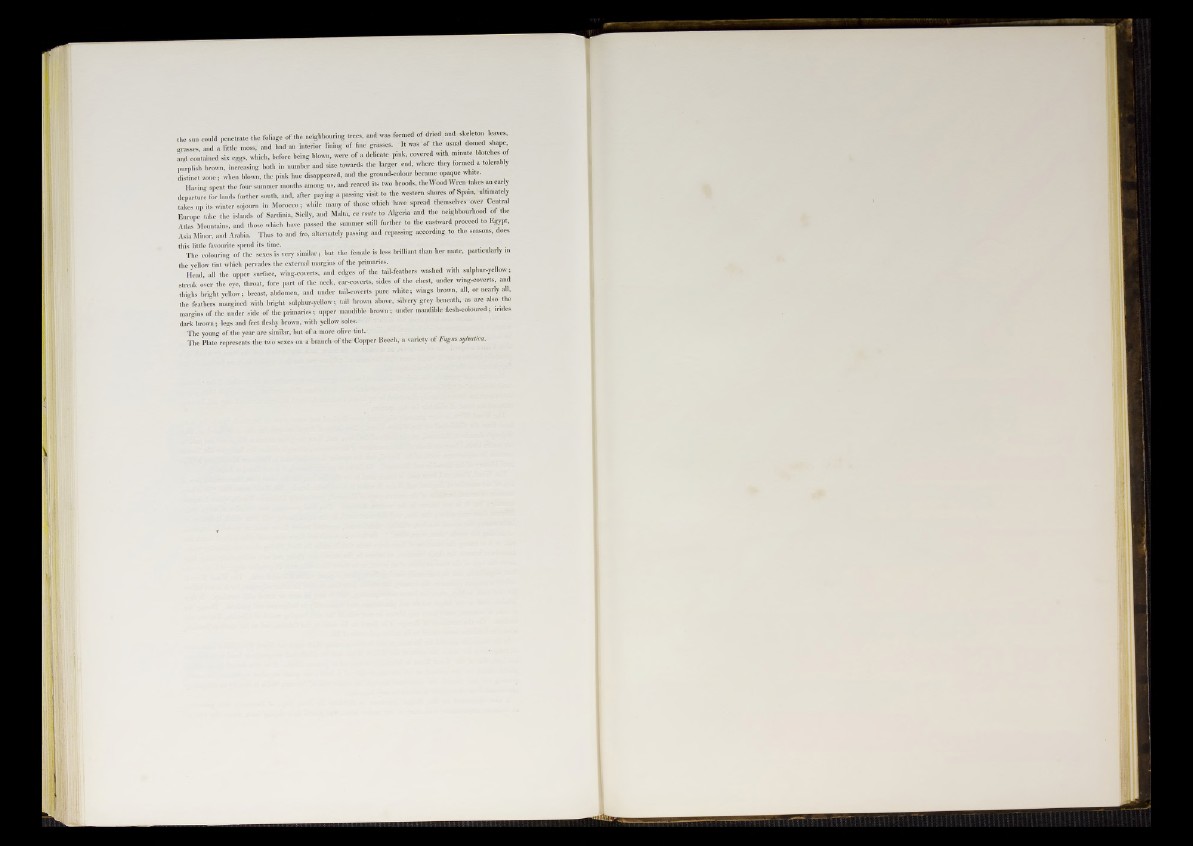
the H could M M the foliage of the ueighbourlug trees, aud was formed of dried a n d . skeleton leaves,
„ a ss e s and a little moss, and had an interior lining of line grasses. It was "of the usual domed shape
and contained six eggs, which, before being blown, were of a delicate pink, covered with minute blotches of
purplish brown, increasing both b number and size towards the larger end, where they formed a tolerably
distinct zone S when blown, the pink hue disappeared, and the ground-colour became opaque white.
Having spent the four summer months among us, and reared its two broods, theWOod Wren takes an ear y
departure for lands further south, and, after paying a passbg visit to the western shores of Spam, ■ 'ultimately
takes up its winter sojourn in Morocco ; while many of those which have spread ftemselves' over Central
Europe take the islands of Sardbia, Sicily, and Malta, « . rmte to Algeria and the neighbourhood of the
Atlas Mountains, and those which have passed the summer still further to the eastward proceed to Egypt,
Asia Minor, and Arabia. Thus to and fro, alternately passing and repassing according to the seasons, does
this little favourite spend its time. . .
The colouring of the sexes is very similar; but the female is less brilliant than her mate, particularly m
the yellow tint which pervades the external margins of the primaries.
| Head all the upper surface, wing-coverts, and edges of the tail-feathers washed with sulphur-yellow;
streak over the eye, throat, fore part of the neck, ear-coverts, sides of the chest, under wing-coverts, and
thighs bright yellow; breast, abdomen, and under tail-coverts pure white; wings brown, all, or nearly all,
the feathers margined with bright sulphur-yellow; tail brown above, silvery grey beneath, as are also the
margins of the under side of the primaries; upper mandible brown; under mandible flesh-coloured; mdes
dark brown; legs and feet fleshy brown, with yellow soles:
The young of the year are similar, but of a more olive tint.
The Plate represents the two sexes on a branch of the Copper Beech, a variety of Fagus sylmtica.